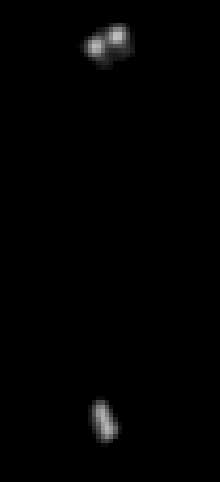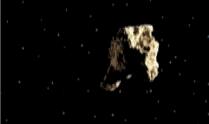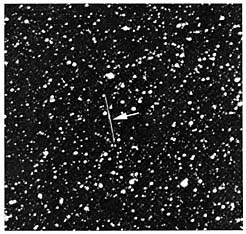 |
Location and
Properties
- Asteroid belt: Most of the asteroids,
many millions (billions?), are located between Mars & Jupiter
(2.1–3.3 AU, with gaps due to resonances
with Jupiter); Despite the number, they are not very crowded
anymore, and major collisions only occur every 100,000 yr or
so.
- Apollo asteroids: Eccentric
orbits that
could hit the Earth; Hundreds of potentially hazardous ones are known
(some make the news each year), and there are systematic searches.
- Trojan asteroids: Orbits in
1:1 resonance with Jupiter's at the Lagrange points, although
some are tilted; Could be as numerous as those in the asteroid
belt.
- Captured ones: Some end up orbiting
planets as their moons (Mars' two moons and some of Jupiter's, for
example).
- Size and shape: At least 200 larger
than 100 km, more than 100,000 (maybe a million) larger than 1
km; We know their size from flyby pictures, or guess it from
the amount of reflected light and estimate of their albedo; Only
Ceres is roughly round, the others are not large enough; We estimate
the shape using their rotation.
- Mass and composition: We can
find their mass if they have an orbiting object (natural or artificial);
From their density and spectroscopy, we find that some are loosely
packed, some are dense rocky/metallic objects, some contain carbon
compounds.
- Types: Many, like Vesta, have
suffered collisions and heating to the point of melting; Others,
like Ceres, have not been modified since formation and can tell
us more about the early Solar System; We estimate their age and
history from the appearance of the surface if we can see it,
or from their shape, composition and density.
|




_187x250.jpg)
![]()